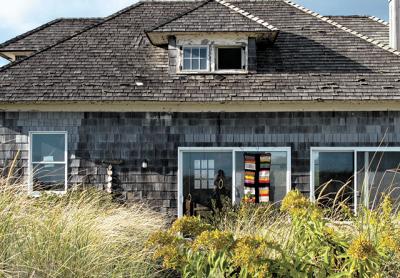Set Design by Ross
Set Design by Ross
Clifford Ross, an East End multimedia artist known for his “Hurricane” series of dramatic, large-scale photographs of wild coastal storms, high-resolution landscape photographs, and mixed-media installations, has designed the sets for the premiere engagement of “Marksman,” a performance by the Kate Weare Company that will take place Wednesday through Nov. 13 at the Joyce Theater in New York City.

